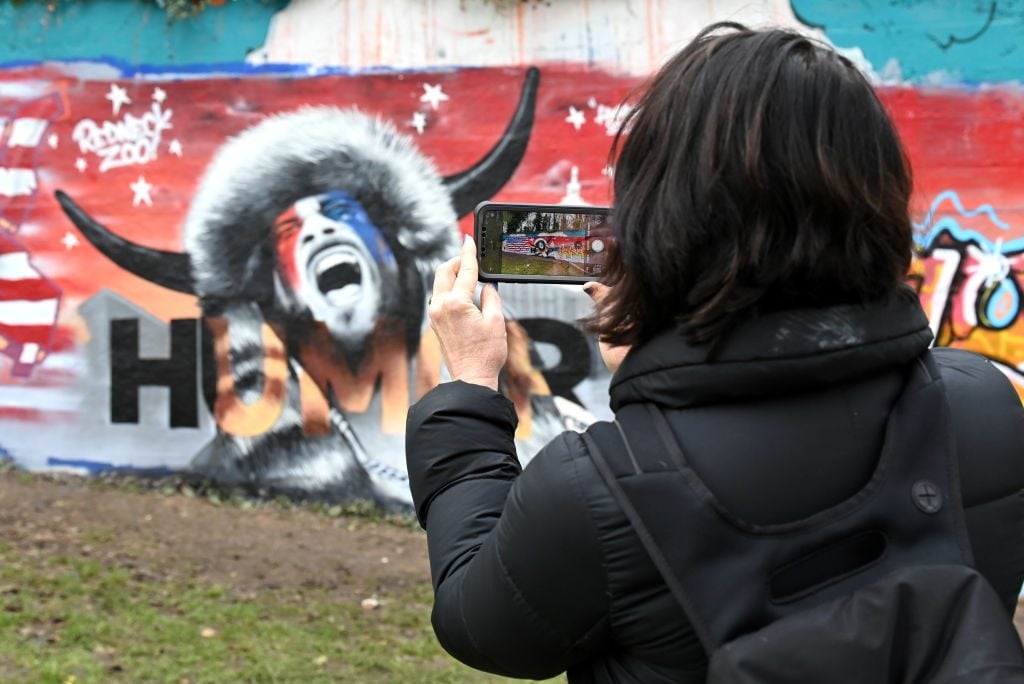Of all the images to emerge from the white supremacist invasion of the US Capitol building, there is one that epitomizes this contradictory moment: Jacob Anthony Chansley (also known as Jake Angeli) standing shirtless in a horned helmet posing with an American flag on the dais of the Senate. His face is painted red, white, and blue; a pair of eagle feathers dangle from the fur-lined headdress. He flexes a bicep in defiance, as if he has just conquered a foreign land.
I have seen this image before: hung on the walls of museums, in textbooks, chiseled in statues across the United States. It is an image of violent appropriation—a warning and a reminder. White supremacists like Angeli pose as Indians in order to create an image of themselves as inseparable from the land itself. They imitate Indigenous people and they justify their actions by imagining themselves as the natural heirs to a land retroactively emptied of Native Americans.
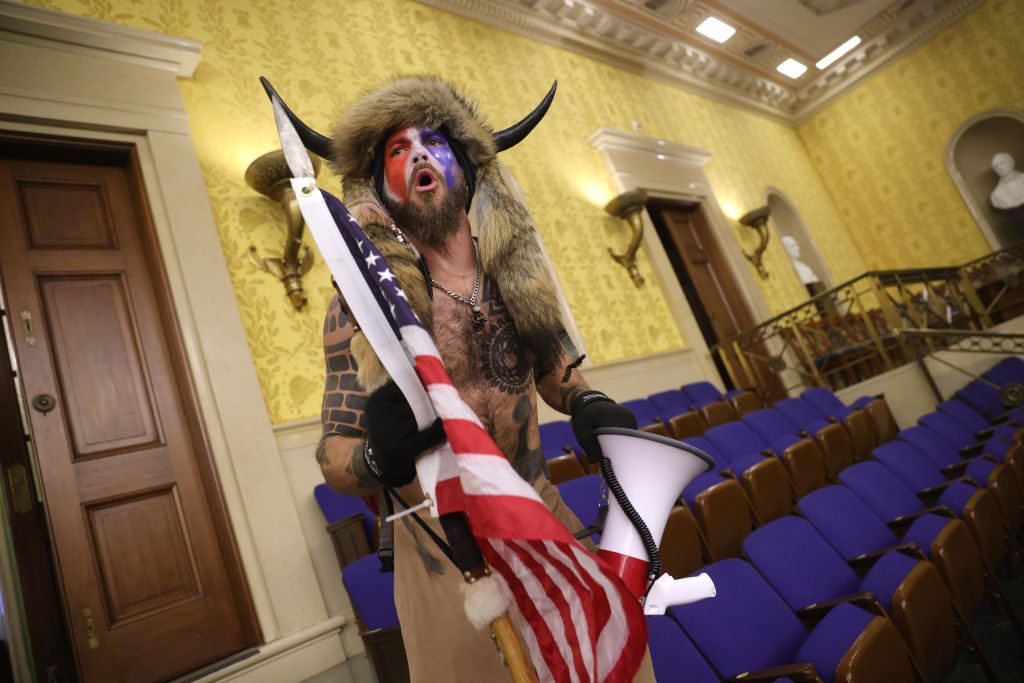
Jake Angeli inside the Senate chamber after the US Capitol was breached on January 6, 2021. (Photo by Win McNamee/Getty Images)
But we are still here.
As a Cherokee Nation citizen, I have witnessed countless examples of the appropriation of Native American imagery and identity by non-Indigenous people. But Angeli’s pose—and its iconographic significance—is not just another instance of cultural appropriation. It is also an expression of an enduring desire for indigeneity without Indigenous people.
Storming the Capitol was an expression of the inability to imagine a world in which white people do not automatically and inevitably wield the power over life and death in this country built on genocide and slavery. But this imaginary is unthinkable without first positioning Native Americans as inherently closer to “nature,” only to erase us from that natural landscape, and then, finally, replace us with white men posing as Indians. This is the history of the settler colonialism in the United States. Angeli is symptomatic of this history, not an outlier.
While the majority of news outlets have described Angeli’s costuming as vaguely Viking in origin, this interpretation fails to consider the wider cultural history. Tropes of Native American wildness and proximity to nature were harnessed by Romantic-era artists in Europe who were disenchanted with the materialism brought by industrialization and longed for a return to a supposedly unspoiled, pre-modern life.
In the mid-19th century, German painters turned to idyllic if moody landscapes and revived (or invented) Norse folk traditions in literature and music. This imaginary of pre-industrial life was itself influenced by earlier depictions of American nature on colonial maps and of Native Americans as part of nature itself. Such romanticized representations took shape in complex ways over a period of centuries, but it is important to understand that the Germanic revival of Norse mythology was, from the beginning, influenced by tropes of spiritual connection to land that can be traced to colonial depictions of Native Americans.
But don’t take my word for it. Ironically, Richard Wagner’s wife, Cosima, described the very costumes that are now credited with popularizing the image of the heroic horned Viking—from Wagner’s operatic ring cycle Der Ring des Nibelungen—as “reminiscent of Indian chieftains” and “ethnographic nonsense.” The horned helmet has no basis in actual Nordic culture, but does have precedence in Native American communities.
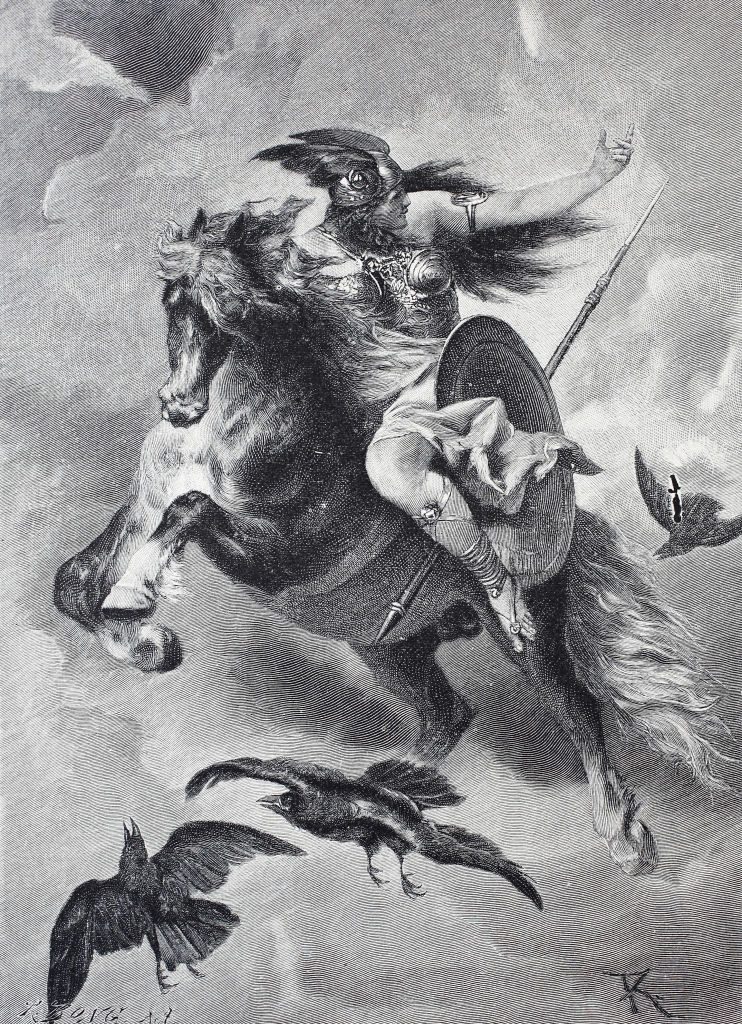
Ride of the Valkyries, Wallkürenritt, 1880, a scene from the opera Der Ring des Nibelungen by Richard Wagner. Digital improved reproduction of an original from the 19th century. (Photo by Bildagentur-online/Universal Images Group via Getty Images)
In short, Viking imagery has been harnessed by white supremacists to reimagine the past, but Angeli’s pose is not just about the history of representation. It’s about how to make demands in the public sphere. It’s about power.
What is the point of dressing up as Indigenous?
According to the white supremacist vision of the United States, the contemporary moment has become corrupted by careerist politicians (“the swamp”), multicultural inclusion (non-white people), and government corruption (the vote is “rigged”). But critiquing the US government through its own mechanisms for dissent and protest is not forceful enough to “make America great again.” And therein lies the utility of the Indian for white supremacists. Indigenous people come to stand in for a primal connection to land, a warrior ethos and martial masculinity, and an opaque, mystical perspective on life that exists prior to the foundation of this corrupt government.
Angeli, who was arrested on January 9, is a QAnon conspiracy theorist who calls himself a shaman and a hyperdimensional being. His posturing enacted a long tradition of what scholar Philip Deloria (Standing Rock Sioux) described as “playing Indian”—mimicking stereotypical imagery of Native Americans in a quest to assert a US national identity while also denigrating contemporary Indigenous people. Participants in the Boston Tea Party dressed in buckskins and face paint and belted out war whoops as they dumped tea into Boston harbor. Such racial cosplay often crops up in acts of civic disturbance.
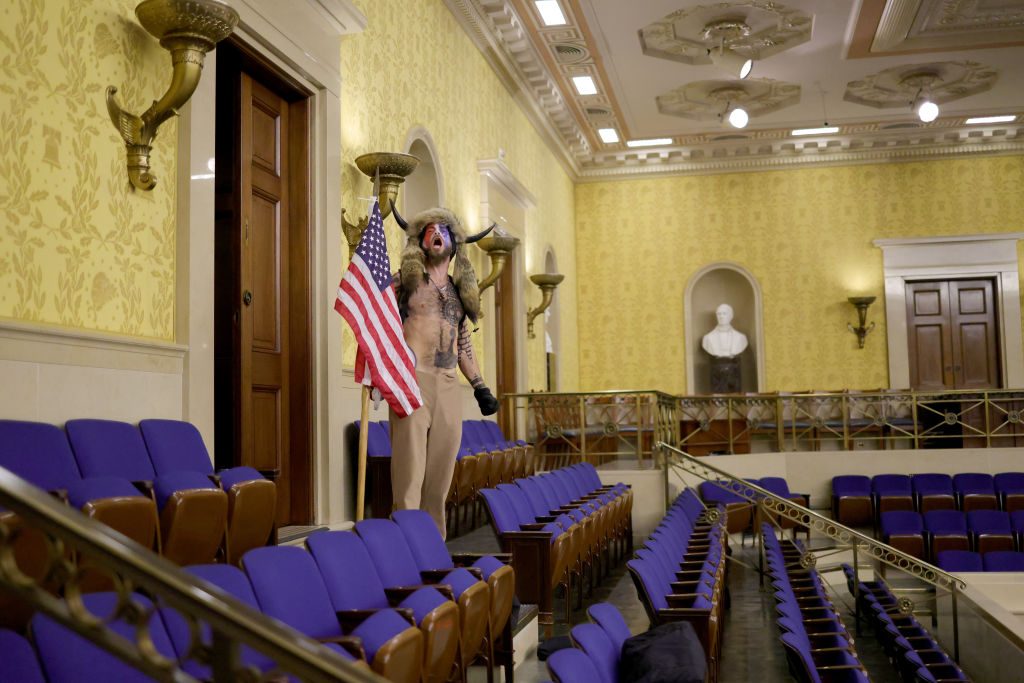
Jake Angeli inside the Senate chamber after the US Capitol was breached on January 6, 2021. (Photo by Win McNamee/Getty Images)
I want to emphasize that Angeli is not just attempting to replicate an Indian image, but to live in Indianness as a statement of a right to the land, this place, this country. But what he does not realize is that this claim to aboriginal belonging is only possible because of the violent seizure of Indigenous lands by the very government that he now protests.
Indigenous peoples are necessary for a vision of America as authentic and free, and yet we must be eliminated so past and present settlers can take our land and replace us with their own systems of government, culture, and history. Angeli’s theatrics are dangerous because they position Indigenous peoples as relics of the past. This appropriation of Indigenous life is akin to what anthropologist Renato Rosaldo has called “imperial nostalgia,” a yearning for a past that was destroyed by the very people who mourn its loss.
It is no coincidence that there is a painting of Columbus’s landing hung in the Capitol rotunda. This posture marks ownership not because of what Columbus actually did—not how he himself posed—but how he has been portrayed in art and popular culture. It is a pose instantly recognizable because of its pervasiveness in US culture. I wonder if Angeli stopped to contemplate this image on his way to the Senate chambers. Or if, perhaps, his body simply remembered this pose as a form of settler-colonial muscle memory.
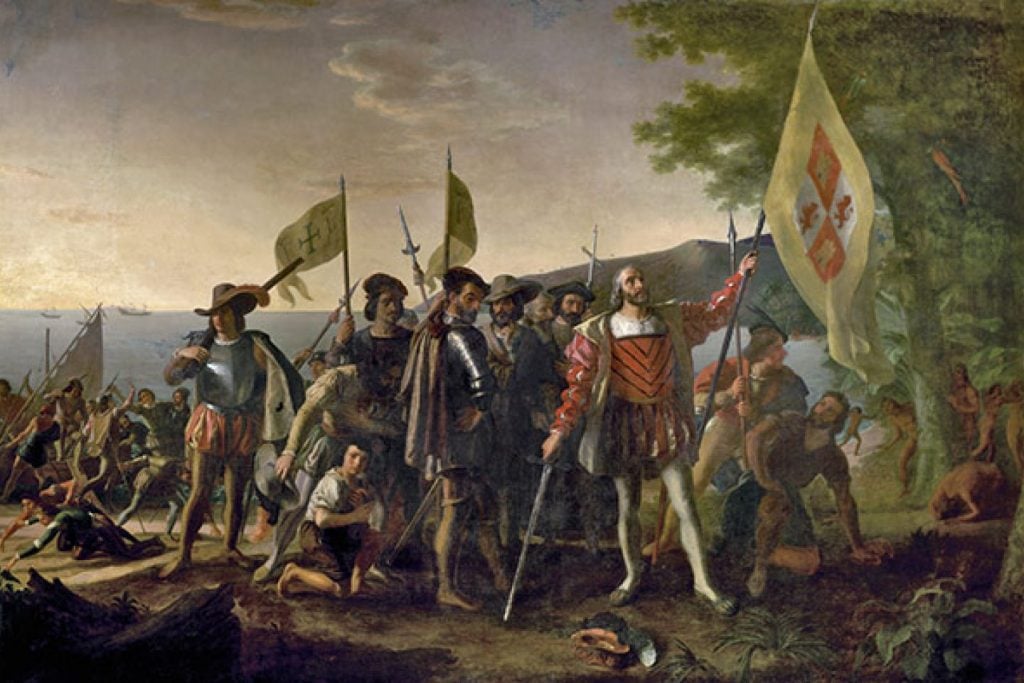
John Vanderlyn, The Basics (1847) in the US Capitol rotunda.
Yet Angeli’s pose also resembles the Romantic portraiture of artists such as George Catlin, who painted Indigenous subjects precisely because he saw them as destined for extinction. Take, for example, Catlin’s Máh-to-tóh-pa, Four Bears, Second Chief, in Full Dress from 1832.

George Catlin, George Catlin, Máh-to-tóh-pa, Four Bears, Second Chief, in Full Dress (1832). Collection Smithsonian American Art Museum, Gift of Mrs. Joseph Harrison, Jr.
White supremacy (indeed, whiteness itself) is neither natural nor innocent. Rather, it is both a structure of reality and a way of seeing the world. Angeli’s stance repeats a long history of violent occupation of Turtle Island by white settlers and the erasure of Indigenous people. As we bear witness to this surreal moment in which romantic portraiture and white supremacy converge, it is imperative that we see these images for what they are: an attempt to seize power by erasing people who never left.
Joseph M. Pierce is a citizen of the Cherokee Nation and associate professor in the department of Hispanic languages and literature at Stony Brook University.
